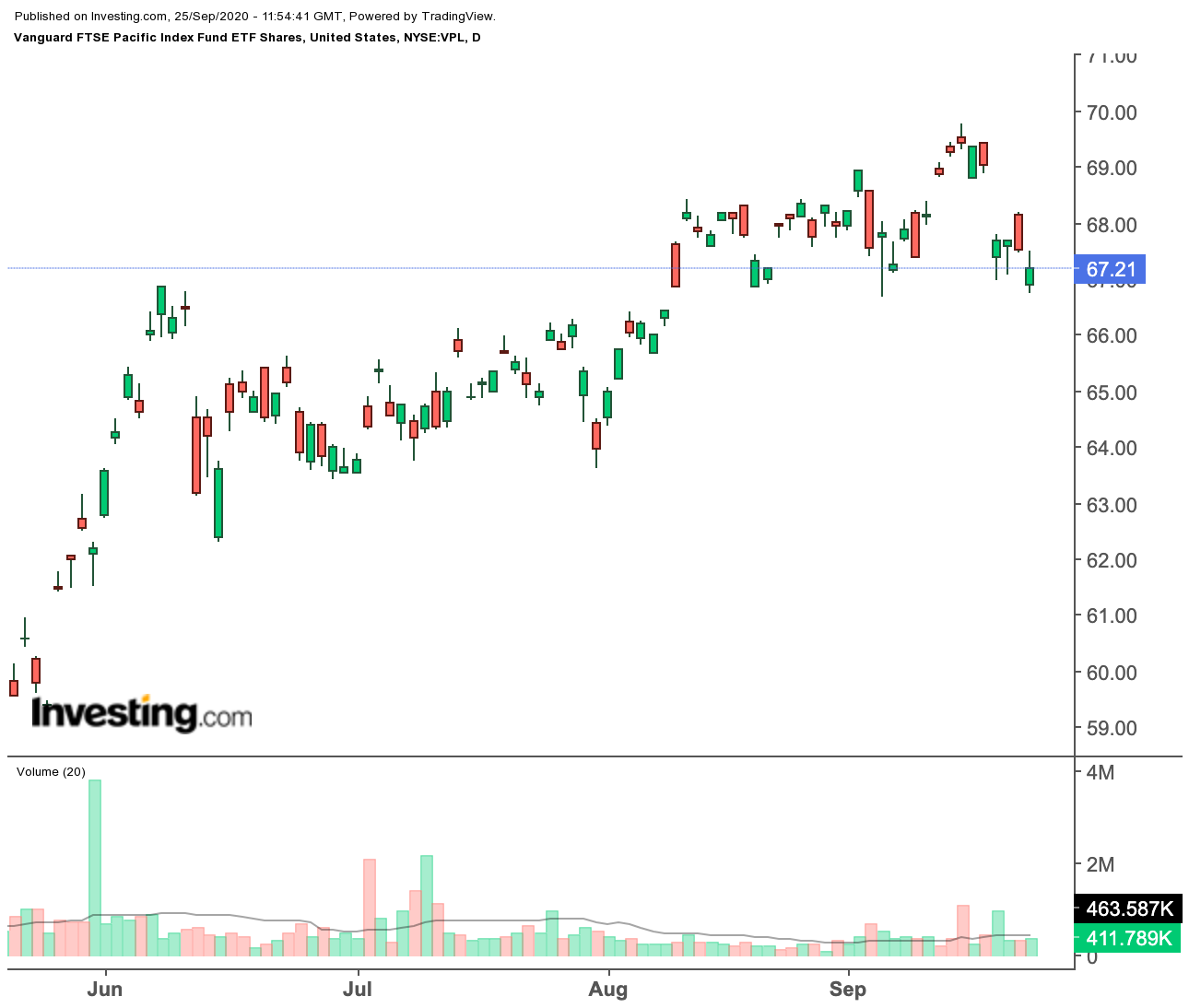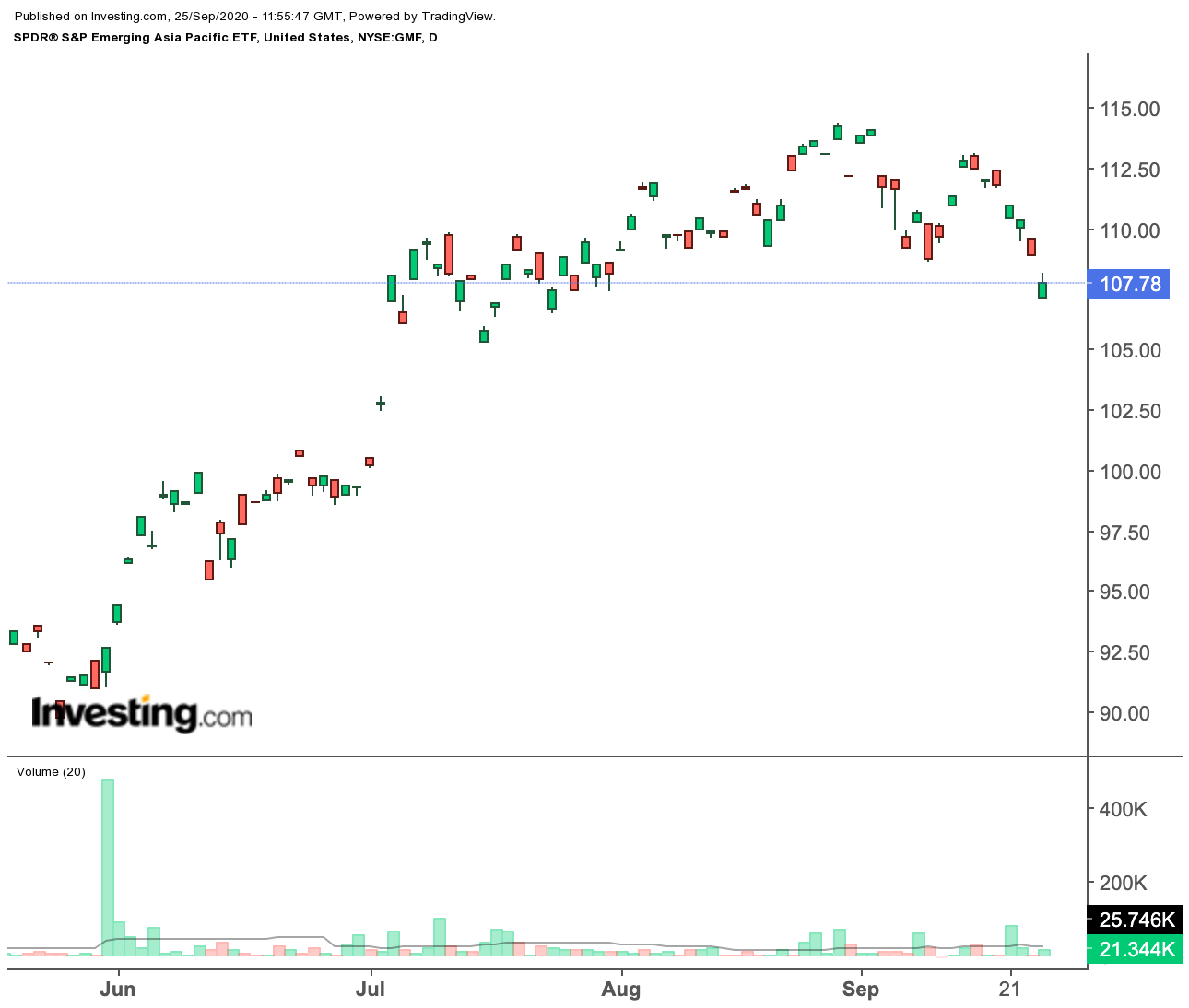Today we turn our attention to the Asia Pacific region to look at two of the many exchange-traded funds (ETFs) offering access to investments in the region. These funds usually are divided into developed and emerging markets.
Japan leads the list of developed funds, while China is the leader in emerging market funds. In late August, Warren Buffett announced Berkshire Hathaway (NYSE:BRKa), had bought stakes in five Japanese companies.
A discussion on Japanese equities typically starts a heated debate between “believers” and “skeptics.” After all, the Nikkei is still about 40% below its historic peak of 38,957.44, hit in the final days of 1989. Yet, we believe there are opportunities in the market. Technological developments, as well as evolving consumer trends, will likely provide tailwinds for growth for a number of robust Japanese companies.
On the other side of the equation we have China, the most populous country on earth. Behind the U.S., it is the second largest economy on the globe. Given the country’s growth outlook, investing in the country will possibly be a dominant theme of this decade. However, it can also be bumpy ride. Therefore, we’d urge investors to take a long-term view.
1. Vanguard FTSE Pacific ETF
Current Price: $67.21
52 Week Range: $48.00 - $71.07
Dividend Yield: 2.79%
Expense Ratio: 0.08%
The Vanguard FTSE Pacific ETF (NYSE:VPL) provides exposure to companies in the major markets of the Pacific region.

VPL, which holds 2,412 companies, tracks the FTSE Developed Asia Pacific All Cap Index. Japan is the major index component, followed by Australia, South Korea, Hong Kong, New Zealand and Singapore.
The top 10 firms make up around 16% of net assets, which are close to $6.5 billion. Samsung (KS:005930) Electronics (OTC:SSNLF), Toyota Motor (NYSE:TM), AIA Group (OTC:AAGIY), SoftBank Group (OTC:SFTBY) and Sony Corp (NYSE:SNE) are currently the top five holdings.
Financials and industrials head the list of industries represented in the fund (each close to 20%), followed by technology. Given the current volatility in broader markets, the exposure to these three sectors may mean short-term pressure for the fund, especially if economic recovery in the region stalls.
In 2020, the fund is down about 3%. However, since the lows seen in March, VPL has gone up 40%. Trailing P/E and P/B ratios are 20.43 and 1.19, respectively. We'd look to buy in a long-term portfolio, especially if the price declines toward $62.50.
2. SPDR® S&P® Emerging Asia Pacific ETF
Current Price: $107.78
52 Week Range: $74.96-$114.30
Dividend Yield: 1.6%
Expense Ratio: 0.49%
The SPDR® S&P Emerging Asia Pacific ETF (NYSE:GMF) provides exposure to emerging market countries in Asia Pacific.

GMF, which has more than 1,250 holdings, tracks the S&P® Asia Pacific Emerging BMI index. In terms of sectoral allocation financials (19.24%) and consumer discretionaries top the list (each sector accounts for around 19%), Next are information technology (17.08%), communication services (13.89%) and consumer staples (6.10%), all followed by others.
From a geographic point of view, companies in China top the list (45.98%), followed by Taiwan (18.7%), India (15.79%), Hong Kong (10.76%), Malaysia (3.06) and Thailand (2.48%). The dominance of Chinese stocks in the fund would also mean investors would have exposure to the country’s robust export base as the growing middle class.
The top 10 businesses comprise around 23% of net assets, which stand around $540 million. Alibaba (NYSE:BABA), Tencent (OTC:TCEHY), Taiwan Semiconductor Manufacturing (NYSE:TSM), Meituan Dianping (OTC:MPNGF) and Reliance Industries (NS:RELI) top the list of holdings.
So far in the year, GMF has returned over 5%. However, since early spring it is up close to 45%. In fact, in late August, the fund hit an all-time high. As a result of the recent rapid increase in price, we believe the fund is overvalued. Trailing P/E and P/B ratios are 16.32 and 1.93, respectively. Therefore, a potential decline toward $100 or below would make the fund more attractive from a risk/return profile.
Bottom Line
September price action in broader markets is possibly hinting that volatility is unlikely to be contained this fall. Thus, there may be selling pressure in both funds. Long-term investors may look to buy the dips. Short-term traders should proceed with caution.
There are several other similar Asia Pacific funds of interest, including:
First Trust RiverFront Dynamic Asia Pacific ETF (NASDAQ:RFAP)
iShares Asia/Pacific Dividend ETF (NYSE:DVYA)
iShares Core MSCI Pacific ETF (NYSE:IPAC)
ProShares UltraShort FTSE China 50 (NYSE:FXP) (Note: This is an inverse fund.)
WisdomTree Emerging Markets ex-State-Owned Enterprises Fund (NYSE:XSOE)
